‘Mod Sin’ is the new flavor of Singapore
Foodies rejoice: The Singapore Food Festival (SFF) is on again — both in the Philippines and the Lion City itself — and it’s all about “Mod Sin,” or Modern Singaporean cuisine.
What is Modern Singaporean cuisine? It’s best exemplified by chefs like LG Han of Restaurant Labyrinth, a Michelin-starred eatery in Singapore that’s been on Asia’s 50 Best list two years in a row (2021 and 2022).
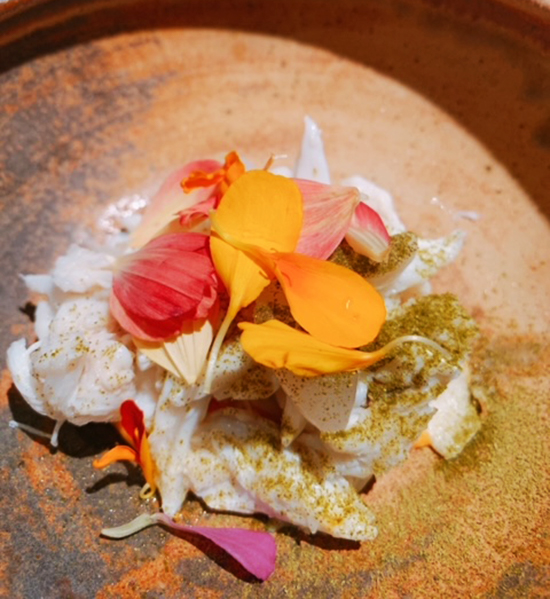
Han was recently in the Philippines to kick off our local SFF, collaborating with chef Chele Gonzalez on a four-hands dinner at Gallery By Chele that was an impressive display of Mod Sin — taking traditional, iconic Singaporean dishes like chili crab, bak kut teh and cereal prawns and transforming them with modern techniques into innovative, surprising and elevated creations.
For foodies who want to taste Mod Sin right here, SFF will be celebrated throughout September at The Grid in Power Plant Mall. Here is our ultimate guide to the 29th Singapore Food Festival 2022, themed “Real Foodies Only.”
Keng Eng Kee (Kek) Seafood
This family-run local institution that started as a hawker stall in 1970 is famed not only for its seafood but also its coffee pork ribs, which are to die for. Steeped in a secret coffee marinade, caramelized and sprinkled with sesame seeds, you won’t be able to stop at just one.
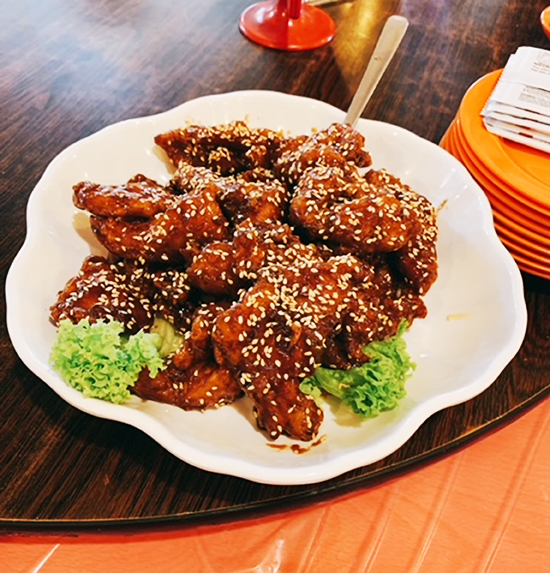
You also have to try their crab dishes: the chili crab is faultless, of course, but the black pepper crab grabbed my attention with its bright, sharp flavors.
Other must-tries: Moonlight horfun noodles, their grandma’s recipe so-called because of the two raw egg yolks on top; the Ming Zhu or Golden Pearl roll — crispy on the outside with the wan soy-spiked goodness of ham, mushrooms, salted egg and prawns on the inside; and the clay-pot pig’s liver rice — a nutritious delicacy.
124 Bukit Merah Lane 1, tel. (65) 6272-1038, open 11 a.m.-2 p.m. and 5 p.m.-10 p.m. daily.
Ya Kun Kaya Toast
This coffee stall since 1944 serves Singapore’s most iconic breakfast, buttered kaya (coconut jam) toast that you dip into soft-boiled eggs and have with kopi (coffee) or teh (tea) sweetened with condensed milk (unless you specify otherwise; see my Wanderlust Hotel entry on how to order coffee/tea in Singapore). Their French toast is also delish. A set is S$5.60 (around P225).
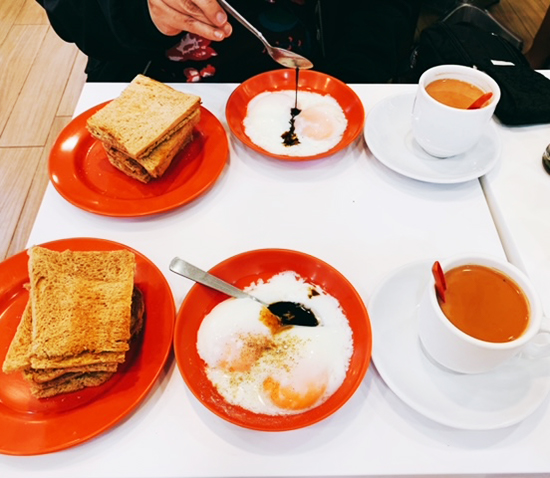
For young people, a popular kaya toast place nowadays is Chin Mee Chin, but Ya Kun maintains its status as the OG.
In the Philippines, Ya Kun has branches at SM Mall of Asia, SM Jazz Mall and NAIA Terminal 2.
Food Folks
This snack shop in Lau Pa Sat — a market that today sells cooked food — has all the pasalubong and chichirya you could want, from fish skin in unusual flavors like tom yum to childhood favorite White Rabbit. (Remember eating the edible “plastic” around this white milk candy?) Today they have variants like matcha and white chocolate-covered dried strawberries. I also scored some nonya coffee cookies and soy skin crisps.
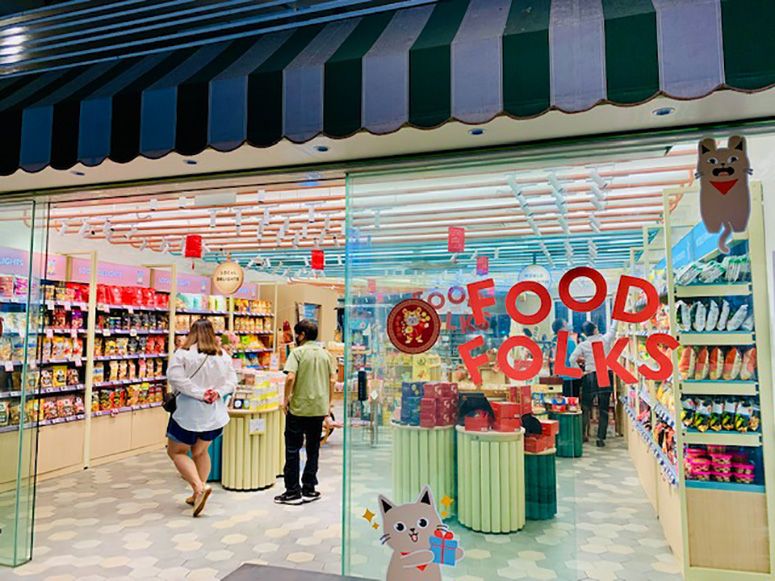
18 Raffles Quay, Lau Pa Sat, opens 10 a.m.
Satay Street
Boon Tat Street in between Robinson Road and Canton Way is fondly known as Satay Street since all the stalls there serve skewers with drinks in an outdoor setting. Since it’s in the middle of Singapore’s CBD, you can see office workers relaxing there on a Friday night (it’s open from 7 p.m. to 1 or 2 a.m. daily).
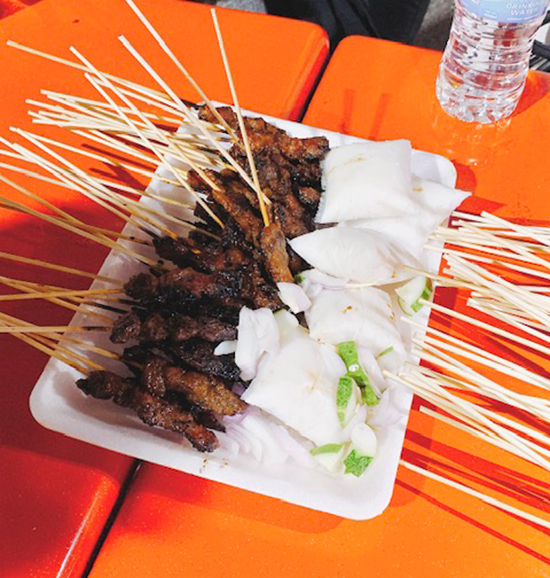
Our extremely affable and knowledgeable Singapore Tourism Board guide Toon Hee ordered 120 sticks of chicken, beef and mutton satay for our group of 10, but even if that seemed a bit much, the meat is sized so petite-ly you can easily eat 10 sticks by yourself, accompanied by a plastic-wrapped rice cake. Pro tip: Try to sit near the #6 or #7 stalls, reputed to be the best among the strip.
Boon Tat Street in between Robinson Road and Canton Way
Wanderlust Hotel
This highly Instagrammable hotel is located in Little India, the grittier heart of Singapore. Rooms and lofts are outfitted with little kitchens for long-staying guests. There’s a Jacuzzi outdoors, and a restaurant, Kotuwa, serves Sri Lankan cuisine.

A super-popular feature is the cold-brewing coffee workshop held by Wanderlust marcomm manager Lyndel Joyce, which was so successful when they held it last July that they extended it. You learn not only how to cold-brew but also how to order coffee and tea at the local kopi tiam, or coffee shops (see boxed sidebar).
2 Dickson Road, tel. (65) 6396-3322
How to order kopi like a local
Joyce explained that since Singaporean coffee is made using locally roasted Robusta beans, the darker, bitterer brew needs condensed milk to cream it. So even if you just order plain kopi, they will automatically mix in condensed milk. A hot beverage in Singapore will cost usually a dollar to $1.10, $2 at most unless you’re in a fancy coffee shop.
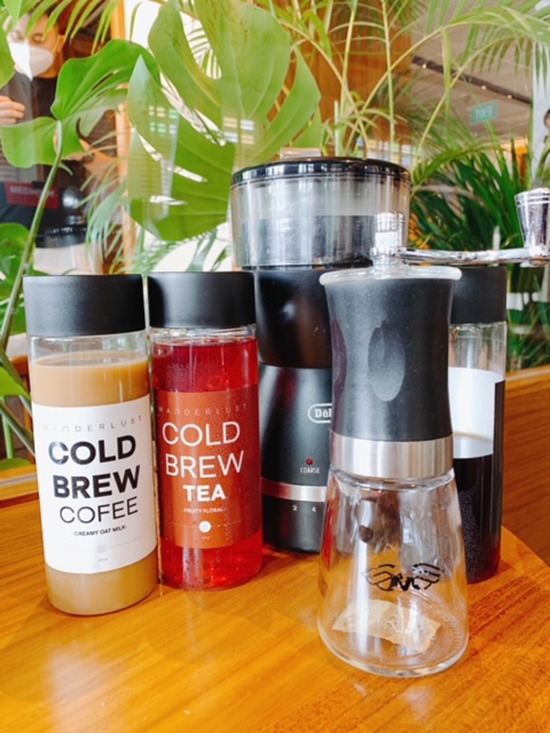
Kopi – coffee with condensed milk and sugar
Kopi-C – coffee with evaporated milk and sugar
Kopi-O – black coffee with sugar
Kopi/C/O Gau – thicker kopi with less water
Kopi/C/O Po – thinner kopi with more water
Kopi/C/O Siew Dai – less sugar
Kopi-C/O Gah Dai – more milk
Kopi/C/O Kosong – no sugar
Kopi-O Kosong Di Lo – super-thick black coffee with no sugar
Kopi/C/O Peng – iced
Kopi/Teh Tarik – Indian coffee or tea that’s pulled to create foam
Teh Halia – tea with milk and ginger
Chinatown Complex
When you see the striking red Buddha Tooth Relic temple, you know you’re in Singapore’s Chinatown with the biggest hawker center, Chinatown Complex (CC), built in 1983 and composed of 753 stalls. The best way to try the five-star dishes is via the Hawker Feast, organized by the CC Hawkers’ Association. The 10-course lauriat comes with free coffee or tea.
We started with Pig Ear Biscuits from the Chai Wee Crispy Cuttlefish stall — delicate cookies that burst in your mouth and taste like refined fortune cookies (they get their name from their shape — no pork involved).

From Xishi we had Bak Kwa, sweet-salty squares of cured, chargrilled Chinese bacon that make great pasalubong.
Prawn noodles from Jing Mei were delicious, followed by Hakka Thunder Rice Tea, which is not a drink but a soup you pour over a bowl of vegetables, herbs and peanuts — an unusual must-try.
Next came fishball noodles by Ming Fa, president of the CCHA. Honestly these are the best fishballs I’ve ever had: incredibly fine in texture and flavor and perfect to the bite.
We also had Braised Tofu by the vice chairman’s Xinglong Food Stall; Super Mummy’s savory fried carrot cake in white and black versions; and chee cheong fun, a traditional “white pancit” flavored with shallot oil and soy sauce. Dessert was soybean curd (taho) with grass jelly.
While this particular menu will only be served till the end of SFF on Sept. 11, the Hawker Feast is an evergreen product you can always order at Chinatown Complex with different menus on offer.
335 Smith Street, Chinatown
Design Orchard
If you want to shop for Singaporean-designed fashion, jewelry, beauty, furniture and food, Design Orchard on Orchard Road curates over 100 local brands, from watch brand Boldr to social enterprise Animal Project.

Upstairs, The Cocoon Space is a creative incubator that’s rented out for workshops, team building, and fashion competitions like TAFF’s (Textile and Fashion Federation), with designers working in a Project Runway-like space.
250 Orchard Road, opens 10:30 a.m.
New Ubin Seafood
At Chijmes, a former convent that’s been converted into a dining complex is New Ubin, a seafood resto that first became popular on Pulau Ubin, an island where granite is quarried (ubin means “granite”), and visitors go on nature trips.

Aside from unusual offerings like their Fish Roe with Sambal, Chinchalok and Petai Beans, I highly recommend their Squid Paste bread, Foie Gras Egg Special, Brinjal eggplant, salted fish fried rice and Salted Egg Pork — so good your eyes will roll back into your head.
Chijmes, 30 Victoria Street, tel. (65) 9740-6870
The Elephant Room
Though located in the former red light district of Chinatown, The Elephant Room, one of the World’s 50 Best Discoveries, is India-inspired all the way. All the spirits for this bar/resto are sourced from India, and each cocktail has a story behind it.
After our welcome drink of watermelon and rosé, I ordered the Kamasutra, a cocktail inspired by the love potion people would drink in the red light district before making love. A mix of aphrodisiac powdered rose, garlic wine, caramelized pomegranate and spices, I don’t know if it put me in the mood for love, but it definitely made me fall for The Elephant Room.
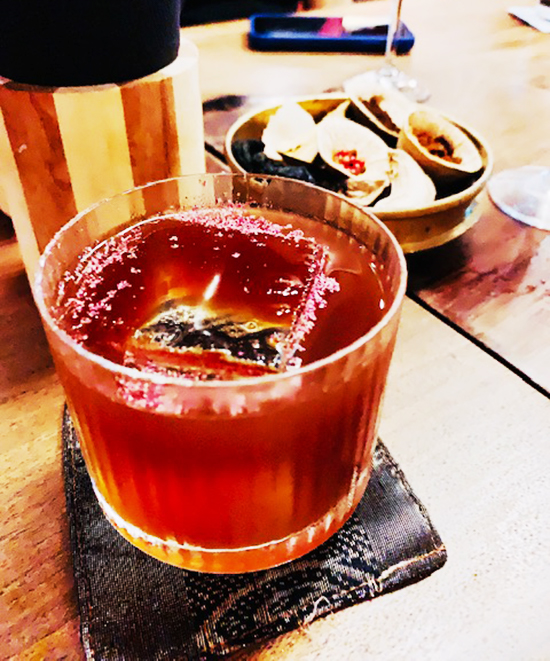
My companions ordered other signature cocktails like Laddooooo, made from Two Indies rum and saffron with a coconut marshmallow; Made in Kolkata, another rum drink with clarified butter, ghee, banana cider and mustard; and Sinhala Coffee, a blend of Ceylon Arrack, coffee mead, Kithul, and wood apple jam, which we sipped between bites of Pani Puri, delicate spheres that contained the taste of India in one bite, with their spice, heat, and crunch.
Our spirited server Han introduced us to Elephant Room distillates like Meat Curry and Chocolate, proving that indeed, the cocktails at this bar are out of this world.
The Elephant Room will be at The Grid in Power Plant Mall until Sept. 30.
In Singapore, it’s located at 20A Teck Lim Rd, open from 6 p.m. to 12:31 a.m., tel. (65) 9111 5131.
Joo Chiat Road
In Katong, Singapore’s affluent district for the rich, is Joo Chiat Road, lined with colorful Peranakan houses adorned with floral motifs believed to bring good fortune, longevity, wealth and prosperity to the family.
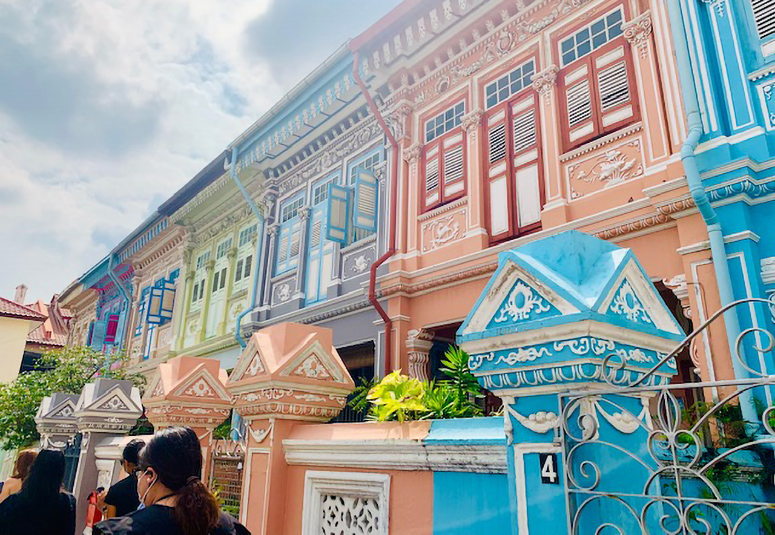
There we met Anthony Ang, a true-blue Peranakan and the Carlos Celdran of Katong, who took us on a walking tour that explained Peranakan culture, history and cuisine.
As we ate a teochew kueh dumpling filled with bamboo shoots, turnip and sweet duck sauce, Ang informed us that in 1511, the Portuguese came to Malacca and Singapore to trade spices and married local Chinese, Malay or Indian women. Their offspring were called “Straits-born” and descendants referred to as “Baba-Nyonya.”
Dunman Food Centre
In 2020 UNESCO gave Singapore’s hawker culture an Intangible Culture of Humanity award. According to Ang, “At least one meal a day is consumed in a hawker center. It started when (Singapore founder, Sir Stamford) Raffles came. Workers needed to be fed, and if you knew how to cook, you became hawker.”
At present there are over 120 hawker centers in Singapore, and Dunman, named after Singapore’s first police commissioner, Thomas Dunman, was built in 1974.
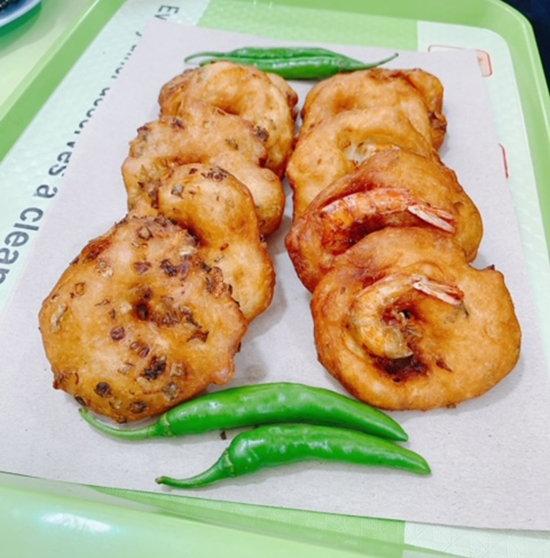
We tried their signature tau kwa pau, a Hokkien dish of fried tofu with chopped yam cake and special garlic sauce.
Vadai is a southern Indian (Tamil) savory donut, made of lentil flour with versions like prawn, veg and anchovy. You can alternate bites of it with green chili pepper if you can take the heat.
To cool our tongues we had a “Michael Jackson,” local slang for a white soy drink with black grass jelly.
271 Onan Road, Singapore
328 Katong Laksa
Chef Gordon Ramsay once came to Singapore to learn how to cook laksa, Hainanese chicken rice and chili crab, and lost in a laksa cook-off to 328 Katong Laksa, a popular hawker chain.
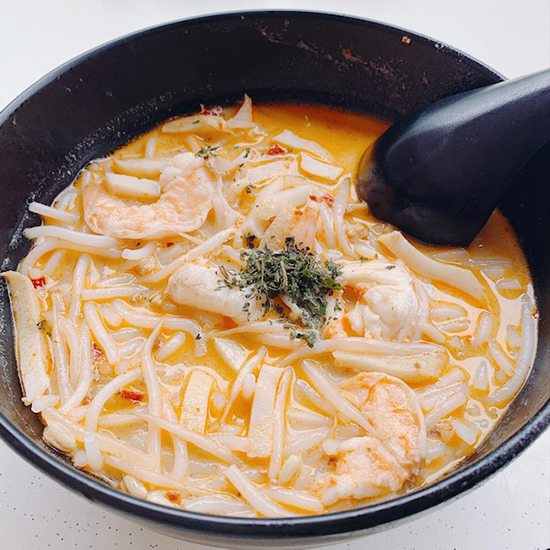
We found out why: 328’s laksa is the perfect balance of sweet, salty and spicy, with deep and complex flavors developed through time and love with its rempah spice paste. The best laksa in Singapore is right here.
51 East Coast Road, Singapore; other branches are at United Square Shopping Mall, Queensway Shopping Centre and Westgate.
Kim Choo Kueh Chang
“Kueh” means “cake” and “chang” means “dumpling,” and Madam Lee Kim Choo was a master at both. Her Nyonya rice dumplings and kueh lapis are Peranakan delicacies that make ideal gifts/ pasalubong.
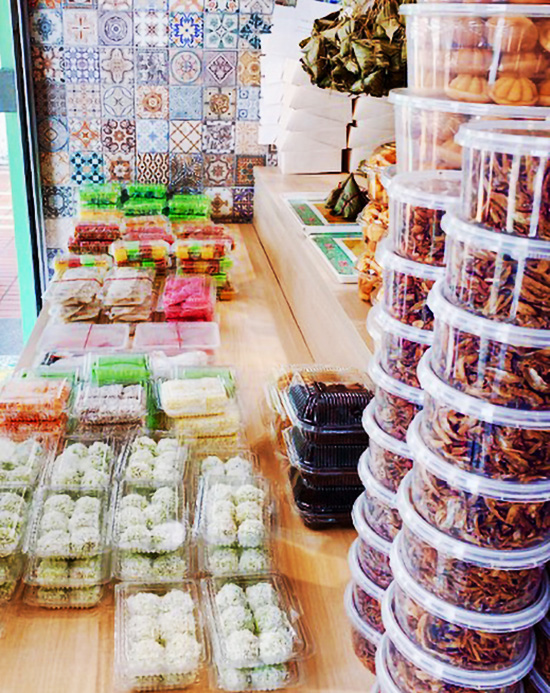
“Lapis” means “layers,” and this sapin-sapin-like confection has a red layer on top to signify birth; green in the middle to mean “life,” and white at the bottom denotes “death.”
The East Coast-Singapore Visitor Centre branch also has a museum upstairs with many fascinating Peranakan items, and a store below where you can buy colorful souvenirs along with the food.
111 East Coast Road; the main factory/original location is at 60 Joo Chiat Place.
Blue Smoke
This Asian smokehouse has won awards for its craft beers and chef Ivan Yeo’s fusion cuisine. I recommend the Emping Belinjo, Indonesian crackers with house-made chili sauce to start; and mains of duck breast, lamb shoulder and Kurobuta pork belly — all fork-tender and tasty.

261 Joo Chiat Road
Fossa Chocolate
I’ve always dreamed about touring a chocolate factory, and Fossa is my dream come true. No Oompa-Loompas in sight; founder Jay Chua singlehandedly led us through a chocolate tasting and factory tour.
He decided to become his own Willy Wonka when he tasted a single-origin chocolate bar made simply from Madagascar beans and cane sugar, and found it mind-blowing.
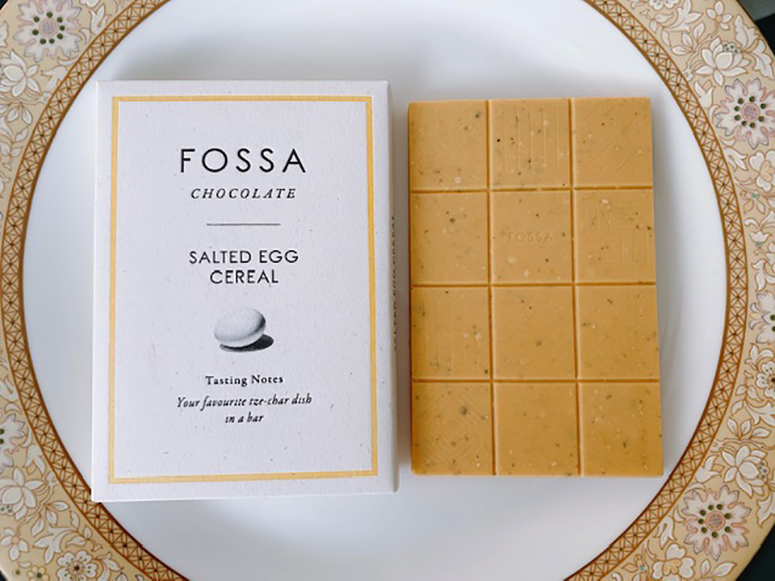
Now he and cofounders Charis Chia (his fiancée) and Yilina Leong create single-origin chocolates from cacao beans sourced all over the world — I was proud to learn that he’s won awards for his Philippine chocolate bars sourced from Rehoboth Estate in Davao — as well as created a distinctive Singaporean identity with flavors like Salted Egg Cereal, Satay Sauce and Mala Hotpot.
For the SFF they’re holding chocolate appreciation and truffle-making workshops, and they’re incredible experiences for chocolate lovers.
Strictly by appointment only at 30 Gambas Crescent Nordcom II. Book a workshop at fossachocolate.com.
* * *
The Singapore Food Festival is ongoing at The Grid in Power Plant Mall: for the whole of September catch The Elephant Room; Sept. 9-11 The Coconut Club; Sept. 12-14 China Mommy; Sept. 16-18 Blue Smoke; Sept. 19-21 Byrd Tubs; Sept. 23-25 New Ubin Seafood; and Sept. 26-30 Your Local.


